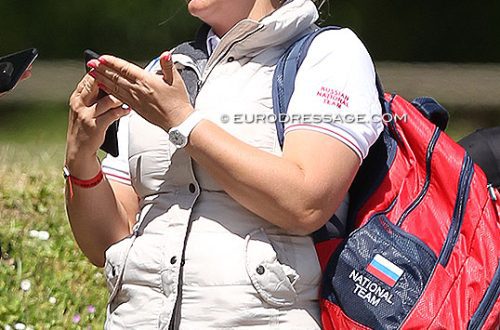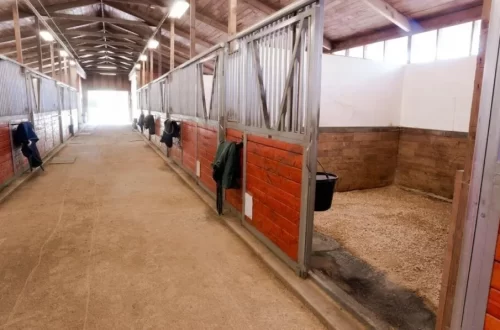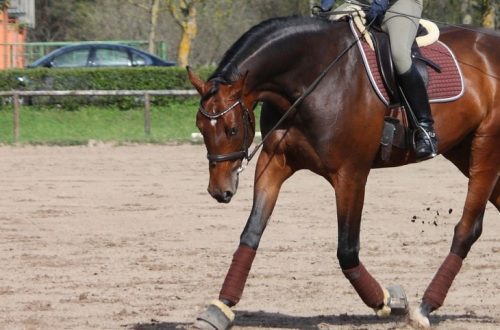
Horse Trouble: Bathing
Horse Trouble: Bathing
Bathing is a rewarding and enjoyable experience and can be a very frustrating experience if your horse, for whatever reason, decides to resist.
Can you bathe a horse on the grass on a loose lead? Do you need interchanges or even an enclosed space? Does a hose scare a horse?
You can introduce your horse to swimming in the big lawn by holding it on a lead. This is done by desensitization (the principle is the same as with whip or rope training). Do not pull on the lead, follow the horse with the stream of water until the horse stops. Turn off the water and let it relax.
As a rule, horses are bathed in specially designated places and put on interchanges. If your horse doesn’t stand well on the sideways and doesn’t want to endure the water, you will need to go back to some basic exercises on patience and a calm reaction to the sideways.
If a horse can stand patiently and calmly at crossroads, try to take him to a place where you usually bathe horses. We have this place open and consists of two well-fixed pillars with a special platform for swimming between them. Wherever you choose to bathe your horse, he must first become familiar with the bathing area/area and the surface of the area. Go to the “wash” and stop. Let the horse get used to the environment. Have her walk around the sink a few times (walk forward first, then enter from the other end if you have two entrances or an open area). Get in and out like you would when loading into a horse carrier. Come in and stay. After a few minutes, the horse will be standing comfortably inside the bathing area.
The water can be turned on after you have placed your horse on the roundabouts. “Introduce” the water as you did during the desensitization lessons. If you have a hose that has an unwind/rewind system, you’ll be more comfortable and won’t get tangled up and the horse won’t step on it.
Turn on a small pressure (do not turn on the hissing sprinkler), direct the jet to the shoulders or legs (as in the picture or video). Direct the jet to one point until the horse stops worrying. Then turn off the water. Let the horse stand for a minute. She will probably try to leave, trying to avoid the jet. If the horse panics, then you will need to go back and work on patience and trust.
Suppose the horse has calmed down and is standing relaxed when you direct the jet to his shoulders. Now slowly move the jet down your legs until it starts to object. Wait until she stops fidgeting or moving and remove the water again. Move the jet to the withers, then move to the croup. Every time the horse calms down, turn off the water or put it aside. As you move along the neck, the horse will probably start to turn its head to avoid getting water on its muzzle. Don’t try to wash her face at this stage.
When the horse can tolerate a simple jet all over his body, you can try switching the hose to spray mode. It creates noise and hiss, so first turn on the sprinkler without pointing it at the horse. And then start the process from the very beginning, as you did with a simple jet.
The ideal time to play bath is when your horse has done a particularly good job and is sweating a lot. Almost all of my horses quickly get used to bathing on hot days, and even learn to enjoy it when I give them a drink from the hose.
Head
Now we will try to wash the horse’s face (with my quiet stream, not with a sprayer).
Start at the back of your head or between your eyes. The horse will throw its head up. One of my horses started backing up and glowing – she really didn’t like the water on her face. Conditions were safe and she did not capsize. But she told me how much she didn’t like what was happening. I didn’t get in her way, but I persisted when she “came back.” The horse realized that her little tantrum hadn’t stopped the process.
When your horse makes the slightest movement to lower his head (random movement), remove the water. You will teach the horse that by lowering his head while washing, he will do the right thing. As you learn, before removing the water jet, ask the horse to lower his head and stay in this position for a short time. This will be difficult to do at first – the horse may fight and toss its head up and down faster than you can react, but don’t back off until you “catch” the head for a moment if you can. Remember that the key is to relieve the pressure. When the horse calms down, you remove the water.
If you can’t catch the moment when the horse’s head is down, try a desensitizing lesson: just point the jet at the head until the horse stops fighting it. My glowing horse, after five minutes of struggle, was already calmly enduring drops that got into her eyes.
Пerevod Valeria Smirnova (a source).





